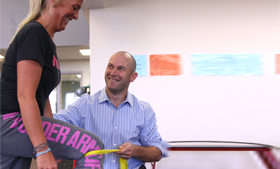The management includes manual techniques with special skills in adjustment or manipulation, rehabilitation or rehabilitation exercises, patient education, lifestyle modification, use of physical therapy modalities, orthotics and other supports. The profession makes no use of prescription drugs or surgery patients requiring these interventions are referred to as the cash pressure health professionals. The chiropractor is the best there.

The interdisciplinary practice is now commonplace, with doctors of chiropractic or chiropractors, doctors, physiotherapists and others working as partners in private practices, multidisciplinary care centers, rehabilitation centers as well as in national medical teams Sport. While most chiropractic services are provided in private practice, access to chiropractors in hospitals is now available in many countries.
Laws
The practice of chiropractic is recognized in around 40 countries. In many other countries where the profession is used, the latter is tolerated. The common features of law and practice in all jurisdictions are:
- First contact profession direct patient access
- The right and the duty of diagnosis, including the taking and or prescription of skeletal imaging
- No use of drugs or surgery
The practice of chiropractic by people without formal and unqualified training, but calling themselves chiropractors, remains a major problem in some countries without regulatory laws for example Brazil, Germany, Korea, and Japan.
Education
Common international standards in education have been obtained through a network of accreditation bodies that began with the American Chiropractic Education Council (CCE), recognized by the United States Office of Education since 1974. These agencies are now represented by the International Chiropractic Education Councils (CCEI).
Admission requirements vary by country. The professional program in Chiropractic Education totals at least 5 years full-time including one year of clinical work and results in an undergraduate doctorate or a Master’s in many countries. Postgraduate training can lead to specializations in various fields such as orthopedics, pediatrics, neurology, radiology, rehabilitation and sport in chiropractic.
Most chiropractors initially graduated from North American colleges. There are now educational institutions in Australia, Brazil, Canada, Denmark, France, Japan, Korea, Mexico, New Zealand, South Africa, Spain and the United Kingdom as well as the United States. According to the education regulations of the different countries, chiropractic education is found to be affiliated within the university system in most countries or else in private colleges. Colleges are being developed in several other countries like Argentina, Chile, China, Italy, Switzerland and Thailand.
Substantial Evidence of chiropractic care
There is substantial evidence demonstrating the safety and effectiveness of chiropractic care for patients with the most common pathologies encountered in chiropractic practice and high prevalence in the population, namely:
Low back pain: Good practice recommendations from international and multidisciplinary expert panels approve the management of chiropractic care for acute and chronic low back pain, recommending spinal manipulation in comparison to treatment with pain medication. Chiropractic care, exercise, and quick return to activities are recognized as the most effective and cost-effective management for most patients. Rest beyond a few days, passive therapies, drugs and steroid injections are not recommended due to ineffectiveness and side effects. The management should be for example on a European bio-psychosocial model.
Neck pain: Recommendations of good practice from panels of similar experts for example in Quebec Task Force on the sprain cervical, 1995, Bone and Joint Decade Neck Pain Task Force. Corroborate the results on low back pain for the management of neck pain common, the second cause of disability of musculoskeletal disorder after low back pain in developed countries.
